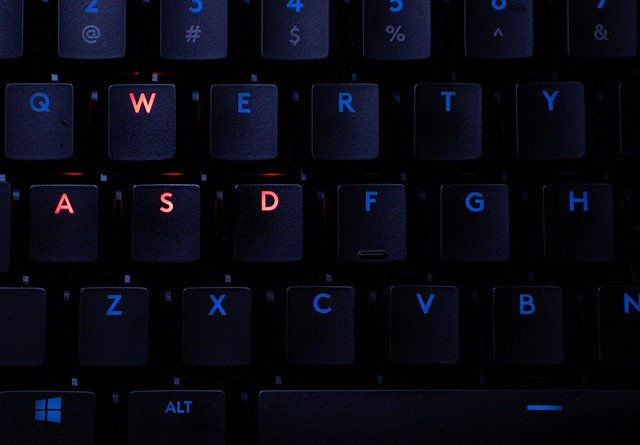Power and lighting: managing RGB without draining performance
RGB lighting adds visual flair to modern keyboards, but it can also affect power draw, latency, and firmware behavior if not managed thoughtfully. This article explains practical approaches to balance lighting, customization, and system responsiveness so you can enjoy illuminated keys without compromising typing or wireless performance.

RGB lighting is an attractive feature on many modern keyboards, but it carries trade-offs that affect battery life, latency, and firmware complexity. Understanding how lighting interacts with a keyboard’s mechanical design, switch contacts, and controller helps you make informed settings or hardware choices. This article explores how to reduce power draw, minimize impact on wireless devices, and preserve tactile typing feel while keeping meaningful illumination and customization options. Practical tips cover firmware settings, layout choices like tenkeyless, hotswap capabilities, and macro workflows to keep performance consistent across wired and wireless setups.
mechanical and switch choices
Choosing a mechanical switch and the right keycap profile influences how visible and effective RGB lighting is, while indirectly affecting power use. Switch types vary in actuation force and tactile feedback; tactile switches offer a bump that some typists prefer while linear switches have smoother travel. Keycap material and thickness determine how much light is diffused: thinner or translucent keycaps show more color at lower brightness, enabling reduced power settings. When planning lighting strategies, consider how switch feel and keycap design interact so you can set conservative RGB intensity without losing the desired appearance or typing experience.
wireless, latency, and firmware considerations
Wireless keyboards add a power and latency dimension that wired models don’t. Bluetooth and proprietary 2.4 GHz dongles handle power differently: Bluetooth tends to conserve battery aggressively but may introduce higher polling intervals, while high-performance dongles aim for low latency at the cost of greater energy use. Firmware options often let you switch polling rates, dim or disable RGB when on battery, or assign profiles that reduce lighting complexity for wireless mode. Prioritize firmware updates from trustworthy sources to ensure optimal latency management and predictable power behavior.
rgb and power management
Balancing RGB intensity, the number of active LEDs, and animation complexity is the most direct way to manage power. Static lighting or simple breathing effects consume far less energy than full per-key, reactive wave animations. Grouping LEDs into zones, lowering brightness, or using underglow sparingly can drastically extend battery life on wireless boards. In desktop setups with a steady power supply, full per-key RGB is feasible, but on portable or ergonomic wireless designs, conservative lighting choices reduce periodic charging and maintain steadier performance.
layout, tenkeyless, and ergonomic design
Keyboard layout affects not only desk footprint but also power and customization habits. Tenkeyless layouts remove the numeric keypad, reducing LED count if the board omits extra zone lighting. Compact ergonomic layouts can cut distance and key count, simplifying lighting setups and lowering firmware complexity. Ergonomic considerations—split layouts, tenting, and columnar keys—may change how illumination is mapped to function layers. When optimizing for battery or minimalist setups, selecting a layout with fewer LED zones and predictable layer behavior helps keep lighting efficient and consistent.
hotswap, macro, and customization options
Hotswap sockets and programmable macros increase a keyboard’s adaptability without heavy firmware changes. Hotswap allows you to test switches that pair well with your chosen keycaps and lighting goals, while macros can toggle lighting profiles that prioritize performance or aesthetics. Many boards let you store multiple profiles in onboard memory so you can switch off complex animations when running on battery or enable them when plugged in. Thoughtful customization—such as binding a low-power profile to a function key—keeps the balance between usability, visual feedback, and system responsiveness.
typing feel, keycap materials, and practical tips
Typing feel remains central; any lighting plan should preserve press consistency and minimize input lag. Keycap material (ABS vs PBT) and profile (SA, OEM, Cherry) determine texture and how light spreads. Practical tips include reducing brightness before enabling reactive effects, preferring zone-based lighting over full per-key on battery, and using firmware settings to lower polling when lighting is active. For wireless users, enable power-saving profiles that automatically dim or disable RGB after idle periods to maintain battery longevity without surprising latency.
Conclusion
Managing RGB without draining performance is about informed trade-offs: choose switches and keycaps that suit your lighting goals, use firmware profiles to separate plugged-in and battery modes, and prefer simpler animations or zone lighting for portable setups. Layout choices like tenkeyless and hotswap support affect how many LEDs you need and how easy it is to iterate. With deliberate configuration and modest illumination settings, you can enjoy customization and tactile typing while keeping latency and power impact under control.





